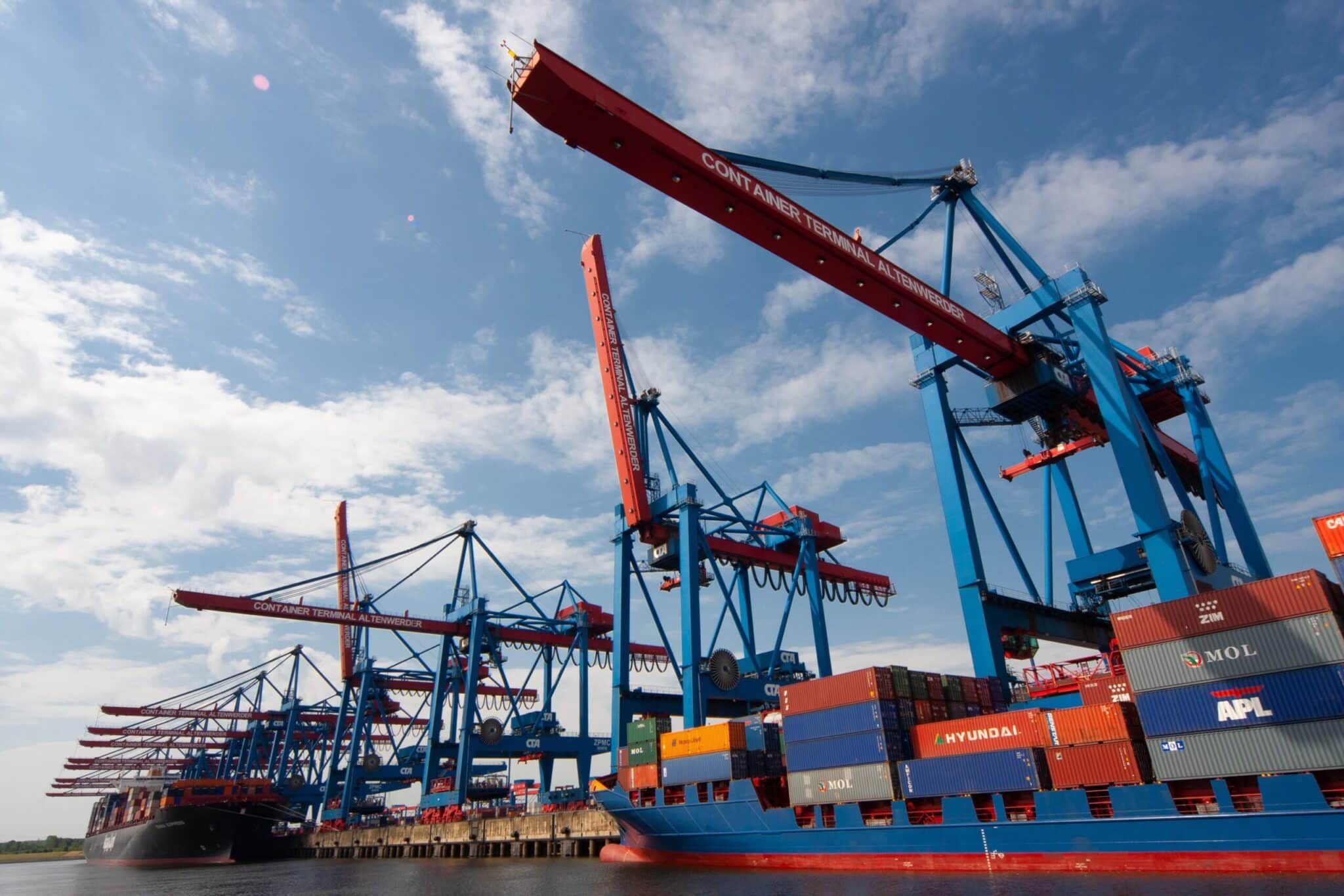When manufacturers or direct-to-consumer companies think about shipping, they typically envision individual boxes of goods being transported across the country in trucks and cargo planes. What most of these shippers are thinking of is parcel shipping—the movement of goods that handles packages one at a time. However, there’s another critical type of shipping in the logistics industry that deals with goods in larger quantities, like pallets, truckloads, and shipping containers: freight shipping.
While size represents the primary difference between parcel and freight, these services differ significantly in their price structures, service levels, and delivery factors. Understanding these distinctions is crucial for optimizing your shipping spend management strategy and choosing the most cost-effective transportation method for your business needs.
Key Takeaways
- Parcel shipping refers to when packages are moved one or a few at a time through ground or air shipping with companies like UPS, FedEx, or DHL.
- Freight shipping is used when organizations need to ship a collection of goods by pallet or truckload as a group.
- Parcel shipping offers faster delivery, better tracking, and residential delivery capabilities, while freight provides specialized handling for oversized items and bulk transportation benefits.
- Many successful businesses combine both methods, using freight for bulk B2B shipments and parcel services for direct-to-consumer orders to optimize costs and service levels
What’s The Difference Between Parcel And Freight?
The overarching difference between parcel and freight is individual versus bulk shipments. Parcel shipping focuses on individual packages sent one at a time, typically in direct-to-consumer relationships. Freight shipping, conversely, involves transporting collections of goods by the pallet, truckload, or container as consolidated shipments.
The difference between parcel and freight shipping impacts everything from pricing structures to delivery timelines, making it essential to understand which method aligns best with your shipping profile and business objectives. Let’s break each type of shipping down to learn more about them and when to leverage each one.
What is Freight Shipping?
Freight shipping is the movement of large quantities of packages or cargo simultaneously. When logistics professionals reference “cargo” rather than “parcels,” they’re typically discussing freight operations. To understand the scale difference, consider that major carriers like UPS, FedEx, and DHL limit parcel shipments to 150 pounds—anything exceeding this weight threshold must utilize their freight services.
Additionally, UPS and FedEx also have size restrictions that move shipments from parcel to freight. As of 2025, that takes effect with any shipments larger than 108 inches by 165 inches.
3 Freight Shipment Categories
Freight shipments are categorized based on space utilization and weight:
- Full Truckload (FTL): Shipments that occupy an entire truck trailer, typically weighing between 40,000 and 45,000 pounds, depending on local regulations.
- Less Than Truckload (LTL): Consolidated shipments sharing trailer space with other cargo, usually weighing less than 10,000 pounds total but more than 250 pounds per pallet.
- Partial Truckload (PTL): Shipments larger than typical LTL but not requiring full trailer capacity, subject to less handling than LTL freight.
Freight shipping relies on a variety of transportation methods, including trucks, cargo planes, ships, and trains, and a single shipment can utilize some combination of the four, depending on the circumstances. While millions of individual parcels move each day, only a handful of freight packages are delivered by comparison. Unlike parcel shipping, which operates on a system of repetitive daily routes, freight shipping is based on supply and demand, resulting in less precise delivery predictions.
What is Parcel Shipping?
Parcel shipping is the type of transportation method most familiar to consumers and retailers, involving the movement of individual packages through ground or air services. Companies like UPS, FedEx, DHL, and USPS handle parcels typically weighing less than 150 pounds—though most fall below 70 pounds—while adhering to specific dimensional restrictions.
Since parcel shipping deals with the movement of individual packages, this service is often more flexible and its delivery more precise than freight. Parcel drivers can accommodate additional packages on their routes without significantly impacting delivery schedules, whereas freight operations must consider how additional cargo affects space utilization and delivery timelines for all shipments. A single extra pallet in freight can delay shipments for multiple days at a time.
Parcel shipping services offer multiple speed options from same-day delivery to standard ground transportation, with pricing based on weight, dimensions, distance, and service level selected.
5 Advantages of Freight Shipping
Freight shipping provides several key benefits for organizations moving large and heavy quantities of goods:
- Cost Efficiency at Scale: Per-unit transportation costs decrease significantly when shipping large volumes to single destinations. Consolidating multiple packages into palletized freight shipments often results in substantial savings compared to individual parcel shipments.
- Specialized Handling Capabilities: Freight carriers offer specialized equipment and handling for oversized, heavy, or uniquely shaped items that exceed parcel carrier limitations. This includes temperature-controlled environments, hazardous materials handling, and custom loading solutions to ensure packages arrive safely at their destination.
- Bulk Transportation Benefits: Freight shipping enables businesses to move entire product lines or large inventory quantities efficiently, supporting wholesale operations and business-to-business relationships.
- Flexible Volume Accommodation: Unlike parcel shipping’s individual package constraints, freight services can accommodate virtually any volume size, from single pallets to full truckloads.
- LTL Options: For small to medium-sized businesses, LTL is particularly beneficial because they only have to pay for the space they occupy instead of the whole truck.
5 Key Benefits of Parcel Shipping
Parcel shipping offers distinct advantages for businesses focusing on smaller shipments and direct-to-consumer operations, including:
- Delivery Speed and Reliability: Parcel carriers maintain extensive networks enabling predictable delivery timelines with multiple speed options. Express services can deliver packages within 1-2 days, or even same-day, across most destinations.
- Package Tracking and Visibility: Advanced tracking systems provide real-time shipment visibility, enabling businesses and customers to monitor delivery progress throughout the transportation process.
- Residential Delivery Capabilities: Parcel carriers specialize in last-mile delivery to residential addresses, offering services like delivery confirmation, signature requirements, and flexible delivery options.
- Smaller Volume Flexibility: Businesses can ship individual items or small quantities without minimum volume requirements, supporting diverse order patterns and customer demands.
- Service Guarantees: Many parcel services include delivery guarantees with refund policies for late deliveries, providing additional reliability assurance for time-sensitive shipments.
Can You Combine Parcel and Freight Strategies?
Many successful businesses leverage both parcel and freight shipping strategies to optimize their transportation costs and service levels. This hybrid approach allows companies to match shipping methods to specific order characteristics and destinations.
Successful combination strategies require careful analysis of your shipping patterns, customer requirements, and cost structures. Effective parcel shipping optimization involves understanding how different shipping methods impact your total transportation costs. Businesses should consider a few key factors when developing combined parcel and freight strategies:
- Order volume and frequency patterns
- Customer location distribution
- Product weight and dimensional characteristics
- Delivery timeline requirements
- Cost per shipment across different methods
Who Should Use Freight vs. Parcel
When to Use Freight
If your company ships a high volume of products to one vendor or customer at a time, you’ll likely find the most value in shipping with freight. So, if you only ship small quantities of goods or your packages rarely go to the same destination, then freight shipping may not be for you.
Manufacturing companies, wholesalers, and B2B suppliers typically benefit most from freight services. Consider freight shipping when:
- Your shipments consistently exceed 150 pounds or dimensional limits
- You regularly ship multiple packages to the same destination
- Cost per unit is more important than delivery speed
- Your products require specialized handling or equipment
- You operate in the middle of the supply chain
Keep in mind that freight shipments may encounter delays due to intermodal transportation requirements and large-scale handling facilities. Plan accordingly for time-sensitive deliveries.
When to Use Parcel
Small to medium-sized retail businesses and direct-to-consumer operations almost always benefit from parcel shipping. These types of businesses are unlikely to move enough volume to a single location to find cost-effective savings in freight versus parcel.
Parcel works best for businesses that:
- Ship individual items or small quantities per order
- Require predictable delivery timelines
- Serve residential customers requiring last-mile delivery
- Need comprehensive package tracking capabilities
- Operate at the end of the supply chain
Gray Area Considerations In Choosing Freight Vs. Parcel
Packages weighing between 70-150 pounds present decision points where either shipping method might be appropriate. The determining factors include:
- Shipment Volume: Multiple packages to the same destination may justify freight consolidation
- Destination Type: Business addresses may be better suited for freight, while residential deliveries typically require parcel services
- Delivery Timeline: Time-sensitive shipments often necessitate parcel services despite higher costs
- Handling Requirements: Fragile or valuable items may benefit from parcel shipping’s individualized handling
Regular shipping pattern analysis helps identify opportunities to optimize between freight and parcel methods based on your specific business requirements.
Freight Vs. Parcel: Making the Right Choice for Your Business
Selecting between freight and parcel shipping—or implementing a combination strategy—requires thorough analysis of your shipping patterns, customer requirements, and cost structures. Understanding these transportation options enables better decision-making that directly impacts your bottom line.
Whether you’re expanding from parcel to include freight services or considering parcel options for direct-to-consumer opportunities, the key is matching shipping methods to your specific business needs and customer expectations.
For businesses looking to optimize their transportation strategies, professional analysis of shipping patterns and carrier options can uncover significant cost savings opportunities. The right shipping strategy balances cost efficiency with service levels, ensuring optimal customer satisfaction while maintaining profitability.
Ready to elevate your freight and parcel shipping strategy? Get a demo of Reveel today to discover how our shipping experts can help you analyze your transportation patterns, negotiate better carrier agreements, and implement cost-effective shipping solutions that support your business growth.




